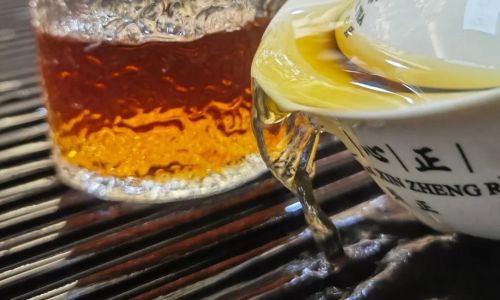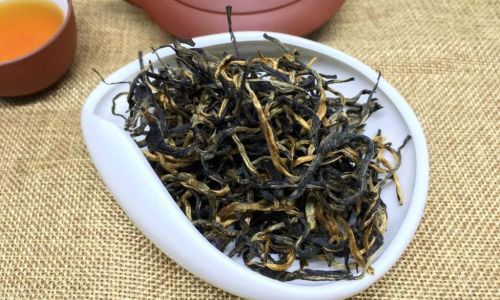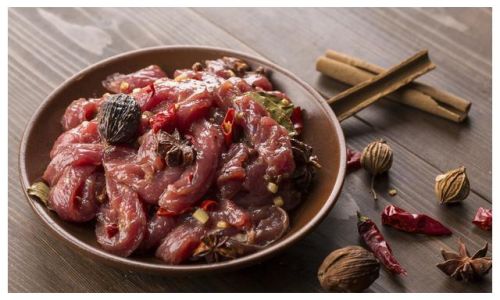Introduction
Preserved fish, a culinary staple across various cultures and regions, offers a unique flavor profile that combines the tang of fermentation with the rich, umami-laden taste of fish. From the salted and smoked fish of Scandinavia to the pickled fish of Southeast Asia, the art of preserving fish not only extends its shelf life but also transforms it into a versatile ingredient capable of elevating dishes to new heights. This guide delves into the intricacies of how to cook preserved fish to perfection, ensuring that every bite is a delightful explosion of flavors.
Understanding the Types of Preserved Fish
Before diving into cooking methods, it’s crucial to understand the different types of preserved fish and their unique characteristics. Each type requires specific handling and cooking techniques to bring out its best qualities.

-
Salted Fish: Commonly found in Asian cuisines, salted fish is preserved by covering the fish in salt, often layered with more salt, and left to ferment. The salt draws out moisture, creating a concentrated flavor. Depending on the species and preservation method, salted fish can range from mild to intensely salty and pungent.
-
Smoked Fish: Smoking involves exposing fish to smoke from burning wood, sawdust, or other materials. This process not only preserves the fish but also adds a layer of smoky flavor. Smoked fish can be further categorized as hot-smoked (fully cooked) or cold-smoked (partially cooked, with a softer texture).
-
Pickled Fish: Pickling involves submerging fish in a vinegar-based brine, which preserves it by creating an acidic environment hostile to bacteria. Pickled fish often has a tangy, sour taste balanced by the fish’s natural oils and fats.
-
Dried Fish: Drying fish involves exposing it to air, sun, or heat to remove moisture. This method is widespread in coastal regions where fish is abundant. Dried fish can be eaten as a snack or used as an ingredient in various dishes, contributing a concentrated fish flavor and texture that varies from chewy to brittle.
-
Fermented Fish: Some cultures ferment fish in rice wine, salt, or other media, creating dishes like Korean jeotgal or Filipino buro. Fermentation adds complexity and depth to the fish’s flavor, often with a tangy, umami-rich profile.
Preparing Preserved Fish for Cooking
Before cooking, it’s essential to properly prepare the preserved fish to ensure it’s safe to eat and to enhance its flavor.
-
Desalting: Salted fish can be overly salty. To desalt, soak the fish in cold water for several hours, changing the water periodically. For faster desalting, use boiling water and soak for a shorter duration, then rinse thoroughly.
-
Rinsing and Soaking: Pickled fish may need rinsing to remove excess vinegar or brine. Soaking in fresh water can help balance the flavors, especially if the pickling was particularly strong.
-
Hydration: Dried fish should be soaked until it softens to a pliable texture. The soaking liquid can be incorporated into the cooking process to add extra flavor.
-
Cleaning: Smoked fish generally requires minimal cleaning, but removing any scales or external debris is advisable.
Cooking Techniques for Preserved Fish
The cooking methods chosen for preserved fish should enhance its unique flavors while ensuring a pleasant eating experience. Here are some techniques and recipes to inspire your culinary endeavors.
- Steaming
Steaming is a gentle cooking method that preserves the fish’s delicate texture and allows its flavors to shine. For salted or smoked fish, steaming can soften the texture and meld flavors.
Recipe: Steamed Preserved Fish with Ginger and Scallions
Ingredients:
- 1 piece of preserved fish (salted or smoked), desalted/soaked if necessary
- 2 slices of fresh ginger, thinly sliced
- 2 scallions, chopped
- 1 tbsp soy sauce
- 1 tbsp sesame oil
- Pinch of white pepper
Instructions:

-
Place the prepared fish on a steaming plate lined with ginger slices.
-
Steam over boiling water for about 10-15 minutes, depending on the thickness of the fish.
-
Garnish with chopped scallions, drizzle with soy sauce and sesame oil, and sprinkle with white pepper.
-
Serve hot with steamed rice.
-
Frying
Frying preserved fish can create a crispy exterior while keeping the interior moist and flavorful. It’s particularly effective with dried or smoked fish.
Recipe: Crispy Fried Smoked Trout with Lemon-Dill Aioli
Ingredients:
- 2 smoked trout fillets
- Salt and pepper to taste
- 1/4 cup all-purpose flour
- 2 eggs, beaten
- 1 cup panko breadcrumbs
- Vegetable oil for frying
- For the aioli:
- 1/2 cup mayonnaise
- Zest and juice of 1 lemon
- 1 tbsp chopped fresh dill
- Salt and pepper to taste
Instructions:
-
Pat the trout fillets dry with paper towels. Season with salt and pepper.
-
Set up a breading station with three shallow dishes: flour, beaten eggs, and panko breadcrumbs.
-
Dredge the fillets in flour, dip in egg, then coat with breadcrumbs.
-
Heat oil in a deep fryer or large, heavy-bottomed skillet to 350°F (175°C).
-
Fry the fillets until golden brown and crispy, about 3-4 minutes per side.
-
Drain on paper towels and serve with lemon-dill aioli.
-
Baking
Baking preserved fish can be a straightforward yet effective way to cook it, especially for larger pieces or whole fish. It allows for even cooking and the opportunity to add aromatic ingredients that complement the fish’s flavor.

Recipe: Baked Salted Cod with Tomato and Olive Relish
Ingredients:
- 1 piece of salted cod, desalted and rinsed
- 2 tomatoes, diced
- 1/4 cup Kalamata olives, pitted and chopped
- 1 small red onion, finely chopped
- 2 cloves garlic, minced
- 2 tbsp olive oil
- 1 tbsp red wine vinegar
- Salt and pepper to taste
- Fresh parsley for garnish
Instructions:
-
Preheat the oven to 375°F (190°C).
-
Place the cod in a baking dish and drizzle with olive oil.
-
Bake for 20-25 minutes, or until the fish flakes easily with a fork.
-
Meanwhile, combine tomatoes, olives, red onion, garlic, olive oil, vinegar, salt, and pepper in a bowl. Mix well.
-
Serve the baked cod topped with tomato and olive relish, garnished with fresh parsley.
-
Soup and Stew Making
Preserved fish adds depth and richness to soups and stews. Its concentrated flavors make it an excellent base for broths, especially in dishes like fish stock or hearty stews.
Recipe: Preserved Fish and Vegetable Stew
Ingredients:
- 1 piece of preserved fish (any type), desalted/soaked and shredded or flaked
- 2 carrots, sliced
- 2 celery stalks, sliced
- 1 medium onion, chopped
- 2 cloves garlic, minced
- 4 cups vegetable broth
- 1 can (14.5 oz) diced tomatoes
- 1 cup potatoes, peeled and cubed
- Salt and pepper to taste
- Fresh parsley or cilantro for garnish
Instructions:
- In a large pot, sauté the onion, garlic, carrots, and celery until softened.
- Add the vegetable broth, diced tomatoes, and potatoes. Bring to a boil, then reduce heat and simmer for about 15 minutes, or until the potatoes are tender.
- Add the shredded or flaked preserved fish and cook for an additional 5-10 minutes, until heated through.
- Season with salt and pepper to taste. Garnish with fresh parsley or cilantro before serving.
Conclusion
Preserved fish is a versatile and flavorful ingredient that can elevate any dish with its unique taste profile. By understanding the different types of preserved fish and mastering various cooking techniques, you can create a myriad of delicious meals that highlight the best of this culinary treasure. Whether you’re steaming, frying, baking, or making soups and stews, the key is to balance the intense flavors of the preserved fish with complementary ingredients and cooking methods. With practice and creativity, you’ll soon be a master of cooking delicious preserved fish dishes that will delight your taste buds and impress your guests. Happy cooking!





0 comments